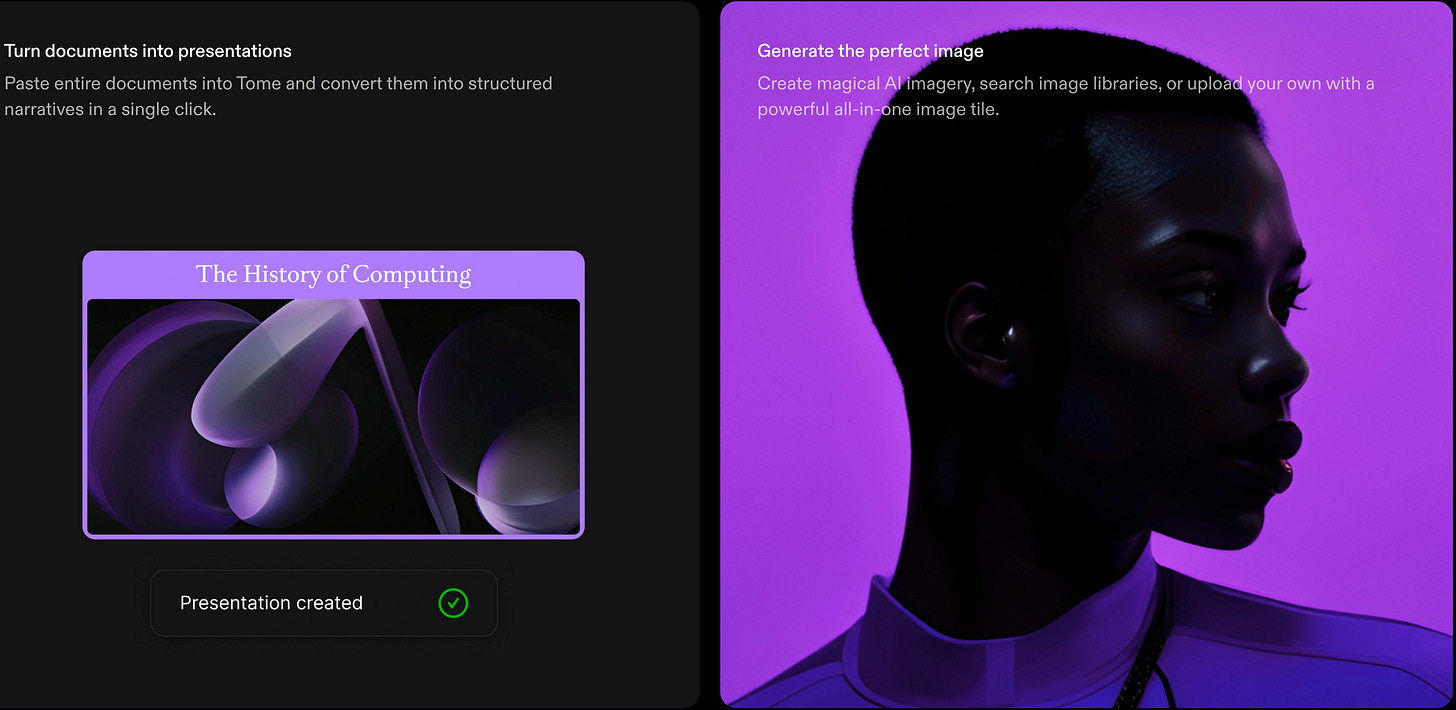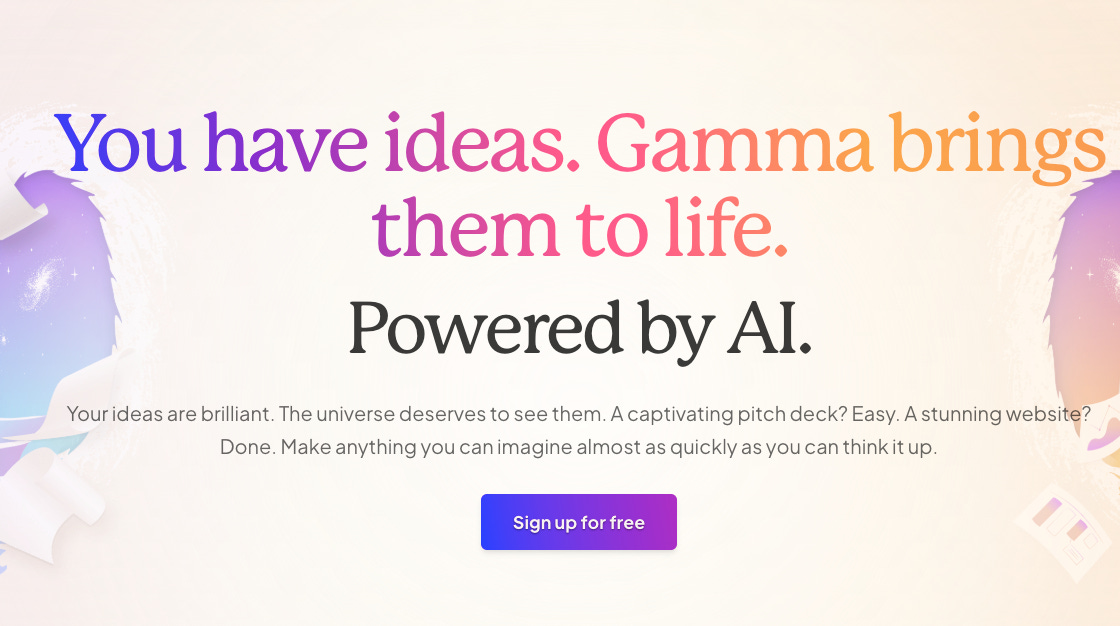Tome Failed in AI PPT—Why Is Gamma Thriving?
Being honest with yourself is the first step—and also the hardest one
A few days ago, AI-powered presentation tool Tome announced that it would shut down Tome Slides by the end of April and pivot to the sales space (“Make deals, not decks”: AI assistant for sales).
Tome’s Failure in AI-Powered PPTs
In an email, Tome stated that they made every effort to improve Tome Slides and turn it into a viable business but ultimately failed to find a sustainable path. This means their attempt in the AI-powered presentation space was unsuccessful.
That said, Tome was initially very successful in attracting users. It reached 1 million users in just 134 days, 10 million in 10 months, and 20 million in 18 months.
Thanks to this rapid growth, the company raised $81.6 million within three months, reaching a $300 million valuation. Interestingly, Tome only started monetizing after reaching 10 million users, but by then, it might have already faced problems—because it hadn’t validated Product-Market Fit (PMF) yet.
Tome’s Positioning: Success and Failure
There were reports that Tome tried to raise $60 million at a $600 million valuation but never completed the round. Many AI startups, like Tome, raised large amounts of money without generating revenue.
Tome’s rapid user growth and its inability to sustain itself may have come from the same issue: positioning. The company branded itself as a tool to help anyone “tell a compelling story.”
Because of its sleek design, Tome attracted Gen Z users, artists, freelancers, designers, and students—making it more of a creative tool rather than a productivity tool for work.
However, these users were less willing to pay compared to professionals who need presentations for work. As a result, even after launching a paid version, Tome’s Annual Recurring Revenue (ARR) was still under $4 million by April 2023 and its growth was slowing.
So, despite having a cool product and millions of users, Tome struggled to convert them into paying customers. At its peak, Tome’s team grew to nearly 60 people but later had to lay off 12 employees.
A Comparison: Gamma’s Success
Tome’s competitor, Gamma, currently has a 28-person team (planning to grow to 50 by the end of the year). According to its founder, Grant Lee, Gamma now has 40-50 million users, generates tens of millions in revenue, and is already profitable.
The biggest difference between Tome and Gamma is positioning.
Tome: Targeted a broad audience (“help anyone tell a story”), which wasn’t a must-have for professionals.
Gamma: Focused on professionals seeking better ways to present information, including documents, non-traditional presentations, and web pages. This aligned well with knowledge workers’ needs, making them more willing to pay.
Lesson from Tome: Focus on a Specific Use Case
Tome’s mistake was trying to appeal to everyone instead of focusing on a specific use case. While storytelling is valuable, it’s not a must-have for businesses. In contrast, Gamma’s clear focus on workplace productivity attracted paying customers.
This reminds me of an AI-powered sales lead generation startup Clay that initially had too broad of a target market. It took them 7 years to focus on sales, finally achieve PMF, and scale revenue.
Perhaps Tome’s pivot to sales will be its chance at success. In their official blog, they admitted:
We realized that to deliver on AI’s promise of helping people tell compelling stories, we needed to focus on one role and a narrower set of use cases. Building AI for everyone at once is fundamentally flawed.
LLMs (large language models) unlock incredible productivity, but they need to be applied in specific fields to deliver real business value.
Tome chose sales because its most engaged users were already sales and growth professionals, making this a promising new direction.
Gamma’s Success: Positioning and Strategy
Gamma’s success is not just about positioning but also its product strategy. Unlike many AI startups, Gamma didn’t build its own AI model or hire a machine learning research team. Instead, it focused on:
Creating simple and powerful tools for professionals who need better documents and presentations.
This model-agnostic approach allows Gamma to upgrade to better AI models when available, keeping its focus on user experience instead of AI technology.
I also read through Grant Lee’s insights over the past six months. His thoughts on users, funding, product development, and key metrics are highly valuable. One quote stood out to me:
Being honest with yourself is the first step—and also the hardest one.
Grant Lee: Focus on Metrics That Drive Sustainable Business
Grant Lee believes that most founders are obsessed with metrics that don't actually drive business decisions, such as total user count, valuation, and funding. These metrics may make them look successful.
They might aid in recruitment, impress external observers, and create FOMO (fear of missing out) among investors, but they don't help build a better product or create a sustainable business.
For Gamma, he said the core metrics are not user count, but these three:



